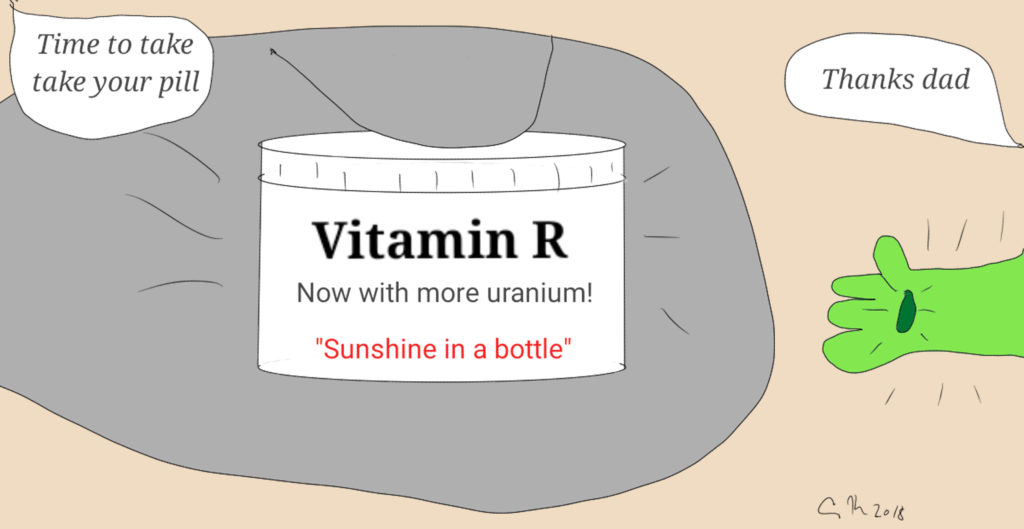by Craig Klugman, Ph.D.
My father tells the story of how when he was a child, shoe stores had boxes into which you could slide your feet, shod in potential new shoes. This “shoe fitting fluoroscope” would display a x-ray of your feet so that you could see how well your shoes fit. In the 1950s, there were 10,000 of these devices in use throughout the United States. Perhaps even worse, store clerks would put their hands in the devices to squeeze the shoes to check for fit.
Even back then, the recommendation was that children not use these devices more than 12 times per year to limit radiation exposure. Until March 2018, the official rule was that any exposure to harmful radiation should be avoided. As of July, though, the EPA now suggests
limiting exposure to about 25 chest x-rays; 14 CT scans.

Why the change? This spring, the agency held hearings on the “Transparency Rule,” which says decisions can only be made on studies where the complete dataset and models are publicly available including most confidential information about research subjects (I wrote about this rule back in April). If a study was several decades old and data was no longer available (or researchers had died), then the EPA could not make rules based on the data. Most of the radiation rules are based on research done in the 1950s (the original data, and researchers are mostly no longer available). Thus, the administration would be able to loosen radiation rules if it adheres to the Transparency Rule.
With the raising of the possibility of loosening radiation rules, the media published headlines such as “Turning to scientific outliers, EPA says a little radiation may be healthy” and “Experts say Trump’s EPA is moving to loosen radiation limits”. A widely distributed AP story said, “The EPA is pursuing rule changes that experts say would weaken the way radiation exposure is regulated, turning to scientific outliers who argue that a bit of radiation damage is actually good for you — like a little bit of sunlight.”These headlines may have jumped the gun, but then many news outlets stopped using trained science writers decades ago—a generalist reporter is cheaper.
What was the source of the “transparent” data that allowed the EPA to state that rules might be loosened? In an April news release, the EPA cited Edward Calabrese, a toxicologist at the University of Massachusetts, who has published that some radiation may not be bad for you. He and his colleagues hold that some exposure may actually make us stronger by activating stress responses. In 2014, he stated that mainstream science’s methods for measuring the dangers of radiation are problematicand cost businesses potential profit. His theory is not held by the mainstream and has been described as “fringe science” and “a scientific outlier”.
A vast majority of scientists hold that radiation is bad for us. How to reconcile these two approaches? I thought about when I served on a jury several decades ago for a drunk driving case. The defendant had demanded a urine test to check for alcohol content, the results of which are then converted to blood alcohol content (what the law requires) using a conversion factor. The attorney argued that the conversion constant could be wrong and is actually more of a spectrum, not a single number. He then showed that at one extreme of the spectrum, his client had a low blood alcohol content and thus was not drunk. This case took place in one of the most educated areas of the country and the jury quickly reasoned that the chances of the constant being at the low end of the scale (not legally drunk) was the same as being at the high end of the scale (very dead). In the same way, the outlier views suggest some people might be harmed by a little radiation but some may not. However, as a statistical group, the level of harm increases with radiation exposure.

This story provides several ethical lessons for us. First, that science is used as a weapon in the current battles for political power. Second, that the media can be quick to jump on a controversial idea (the AP had to walk back some of their statements about the EPA position) and ideally should bring back the specialist science writer. Third, relying on outlier science is problematic as a basis for making decisions. When the vast majority of scientists, plus 80 years of experience, show that something is harmful to health, it most likely is harmful to human health. Fourth, the so-called Transparency Rule is anything but when it removes privacy and confidentiality protections from potential subjects. And fifth, the current administration is far more interested in businesses making money than in protecting residents and citizens.
When making choices in public policy, Mill tells us that it is acceptable, even required, for the government to step in when a person’s actions pose a harm to the liberty of other people. Certainly company’s creating products that put our health at risk is a liberty violation (if you are dead it’s hard to exercise freedom) and thus, at least ethically, it is the government’s role to regulate radiation exposure. This requires making policy based on facts (not ideology) and the best science (not faith or wishful thinking). Luckily, a new lawwas signed at the end of September that allows for new research on radiation and human health. Who will do this new research and what methods they will employ, though, have not been released.